Celebrating 10 Years of Suzaku
Accretion Powered X-ray Sources
While the energy source of stars like our sun is nuclear fusion, the energy source for many of the brightest X-ray sources on the sky is accretion. Accretion occurs in a variety of cosmic sources and results in the release of gravitational potential energy as matter falls in toward an object. When the accreting object is "compact" like a black hole or a neutron star, accretion is a very efficient energy source. Accretion often proceeds via a disk – the matter orbits the central object, but gradually drifts inward through dynamical friction and gets heated up.
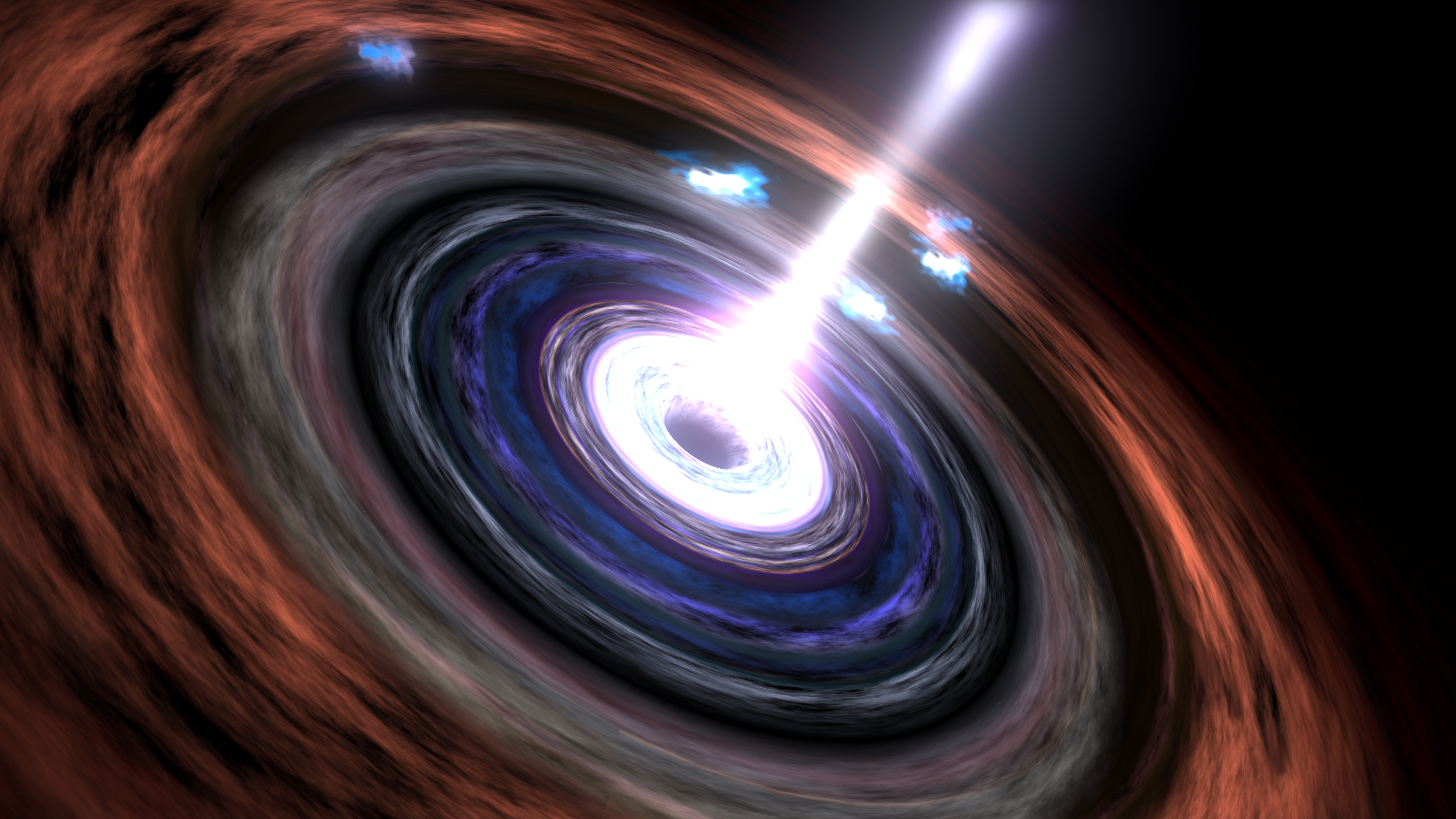
Artist's conception of an accreting black hole. (Credit: NASA/GSFC Conceptual Image Lab)
Accreting black holes and neutron stars are found in binary systems. Supermassive black holes at the center of galaxies can also accrete nearby gas and dust, which make them active ("active galactic nuclei", or AGN). Accretion disks shine at a wide range of wavelengths (visible light, ultraviolet, and X-rays), but X-ray observations have the potential to allow us to measure the motion of matter near the inner edge of an accretion disk, very close to a black hole or a neutron star. This is the regime where we must rely on general relativity (Newton's laws of motion are inaccurate) – so we have the potential to verify some rather exotic inferences drawn from general relativity.
A phenomenon called reflection is an important tool for X-ray astronomers. Low energy X-rays are easily absorbed (hence called "soft"), while high energy ("hard") X-rays are not. When hard X-ray photons, with energies above 10 keV, hit an accretion disk, many are scattered back ("reflection"). Some photons that hit an iron atom knock off an electron; such atoms will then emit X-rays of a specific energy in a process called fluorescence. We can use the Doppler shift and several effects specific to general relativity, to trace the motion of the accretion disk matter.
To use reflection, we ideally need to observe both soft and hard X-rays at the same time, which Suzaku can do using the XIS and the HXD. For almost 7 years, the HXD was the most sensitive instrument for X-rays above 10 keV – until the NuSTAR mission was launched.
Here are four important Suzaku results on AGN and X-ray binaries, three of which used reflection.
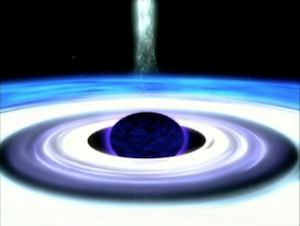
Still image from an animation of accretion around a black hole. (Credit: NASA/GSFC)
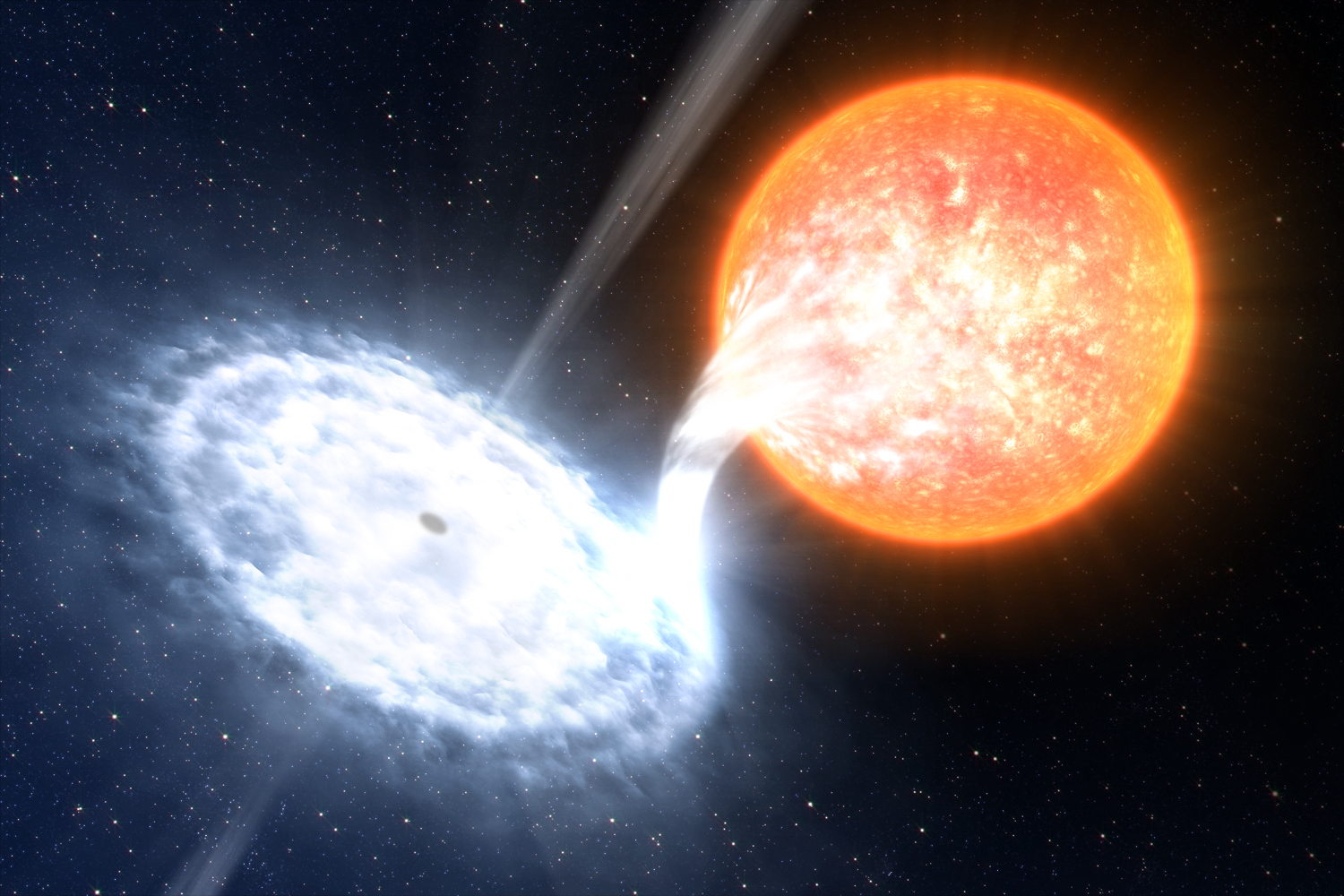
Artist's impression of GX 339-4, which is among the most dynamic binaries in the sky. (Credit: ESO/L. Calçada)
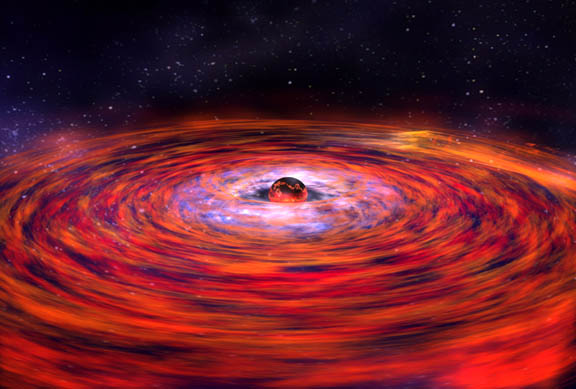
An artist depiction of a disk of hot gas whipping around a neutron star. (Credit: NASA/Dana Berry)
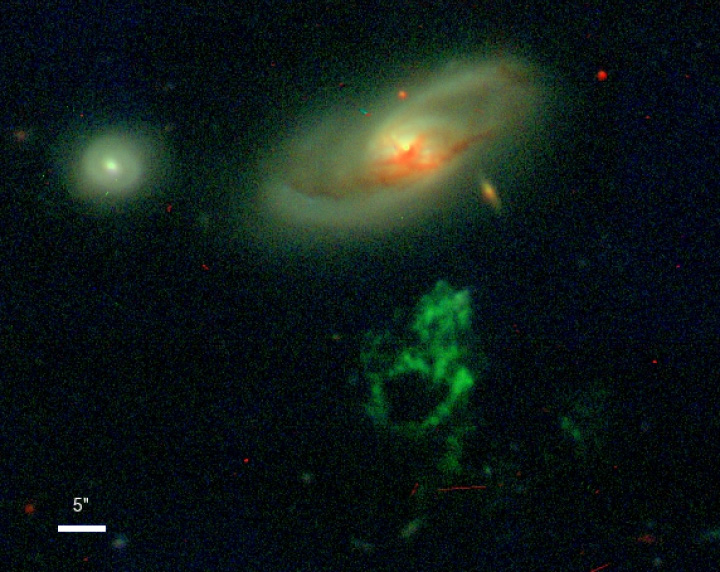
Ground-based optical image of IC 2497 (top), Hanny's Voorwerp (bottom) and a nearby companion galaxy (left). (Credit: WIYN/William Keel/Anna Manning)
Publication Date: July 2015


